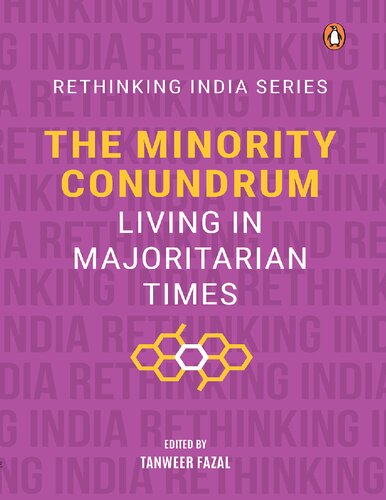

Most ebook files are in PDF format, so you can easily read them using various software such as Foxit Reader or directly on the Google Chrome browser.
Some ebook files are released by publishers in other formats such as .awz, .mobi, .epub, .fb2, etc. You may need to install specific software to read these formats on mobile/PC, such as Calibre.
Please read the tutorial at this link: https://ebookbell.com/faq
We offer FREE conversion to the popular formats you request; however, this may take some time. Therefore, right after payment, please email us, and we will try to provide the service as quickly as possible.
For some exceptional file formats or broken links (if any), please refrain from opening any disputes. Instead, email us first, and we will try to assist within a maximum of 6 hours.
EbookBell Team

4.1
50 reviewsThe second volume in the Rethinking India series
explicates what it means to be a minority in majoritarian times. The
contributors identify vulnerabilities that encumber the quest for the
realization of substantive citizenship by minority groups. The essays
deal with educational attainments, employment prospects in a liberalized
economy, possibilities of equal opportunity, violence of the state and
vigilante groups, emerging questions of citizenship and employment,
linking language with the material life of its speakers, and the
receding political voice of minorities amidst a majoritarian upswing.
Also
examined is the concept of minority being inextricably bound with two
allied ideas equally foundational to the vision of the Indian Republic:
secularism and nationalism. The three together form a conceptual whole
to the extent that none finds its manifestation without reference to the
other two. The take-offs of the minority question in India include the
archetypal nationalist's disapproval of the very endurance of the
subject post-Independence. The secular-modernists and the Hindutva
nationalists converge in prescribing assimilation-one into a modernist
project, the other into a national culture defined by Sanskritic
Hinduism-while the pluralist vision, tolerant of divergent practices,
follies in assuming cultures and religious observances as frozen. This,
along with several allied issues, forms the heart of this
thought-provoking volume.